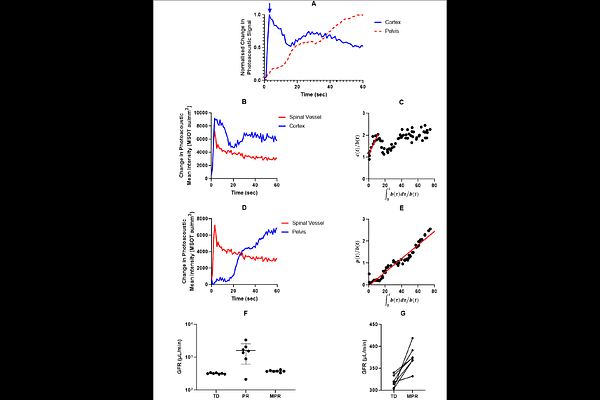Modelling Glomerular Filtration using Multispectral Optoacoustic Tomography and a Novel Near-infrared Dye

Modelling Glomerular Filtration using Multispectral Optoacoustic Tomography and a Novel Near-infrared Dye
Littlewood, J.; Harwood, R.; Vajpayee, S.; Perciaccante, R.; Trivino-Cepeda, K.; Sharkey, J.; Sardella, T.; Burton, N.; Taylor, A.; Wilm, B.; Bearon, R.; Murray, P.
AbstractKidney disease carries significant morbidity, mortality, and financial cost. Preclinical work exploring more accurate methods for assessing renal function is key for monitoring disease progression and the efficacy of future therapies. Measuring kidney function by dynamic contrast enhanced imaging allows us to measure left and right kidney function separately. This provides an internal control where a unilateral injury model is used. Multispectral optoacoustic tomography (MSOT) can measure the renal clearance of administered near infrared absorbers and, via the application of mathematical models, allows for the calculation of glomerular filtration rate. ABZWCY-HP{beta}CD is a cyanine dye bound to 2-hydroxylpropyl-{beta}-cyclodextrin and has shown promise as a glomerular filtration marker. Here we combine MSOT, ABZWCY-HP{beta}CD, and a modified Patlak-Rutland model to measure the glomerular filtration rate of healthy mice and following ischaemic reperfusion injury.